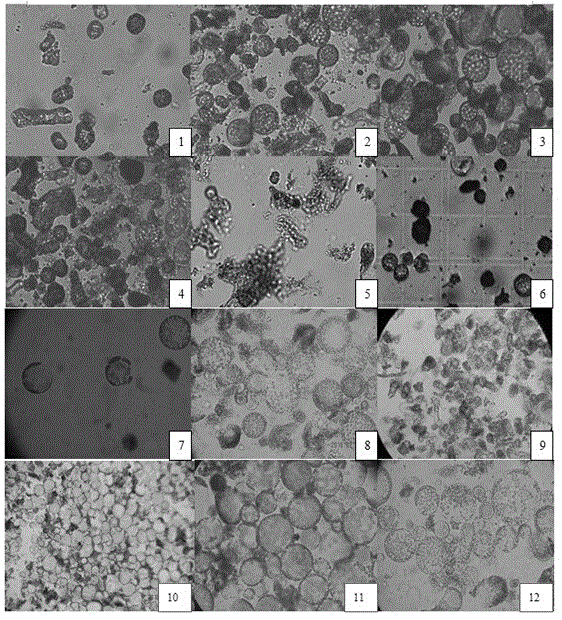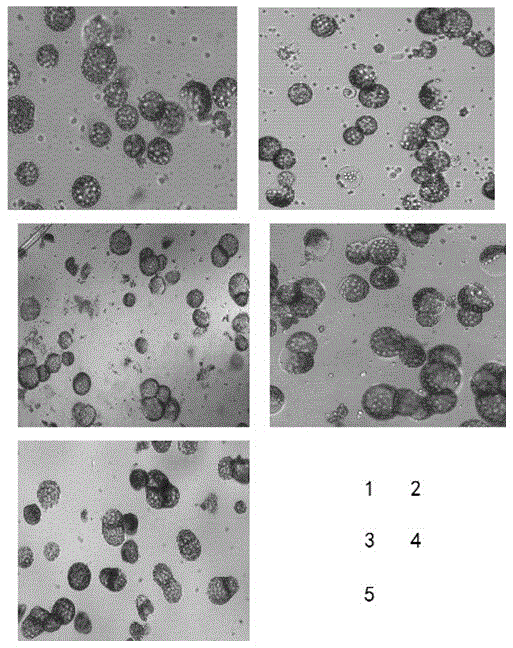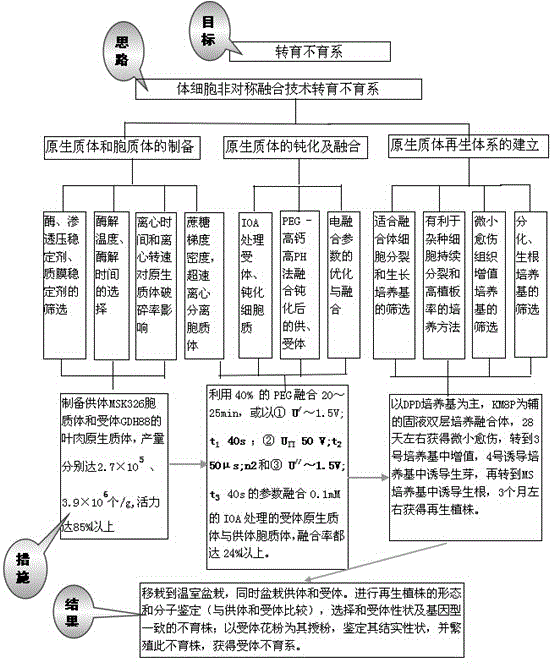Sterile line rapid transformation breeding method
A transgenic and rapid technology, applied in horticultural methods, botanical equipment and methods, biochemical equipment and methods, etc., can solve the problems of reducing the number of backcross algebras and planting samples, high cost, long cycle, etc. Fertility time, male sterility stabilization effect
- Summary
- Abstract
- Description
- Claims
- Application Information
AI Technical Summary
Benefits of technology
Problems solved by technology
Method used
Image
Examples
Embodiment
[0060] Optimization of Protoplast Preparation Technology of Tobacco Mesophyll
[0061] 1.1 Effects of different enzyme solution combinations on protoplast yield and activity
[0062] Enzyme hydrolysis is the most important step in protoplast freeing. In this experiment, K326 leaves were used as materials, and under the same conditions, 6 different enzyme concentration combinations were designed (Table 1). The protoplast divisions are as follows :
[0063]
[0064] According to the data in Table 1, considering protoplast yield, vigor, cell fragments, cost and other aspects, the best enzyme solution combination for tobacco protoplast separation is cellulase CellulaseR-10 with a concentration of 1.0%, pectinase PectinaseY- The concentration of 23 is 0.5%.
[0065] Effects of different enzymatic hydrolysis time on the yield and vigor of protoplasts
[0066] Depend on figure 2 Shown: With the increase of enzymolysis time, the protoplast yield increases constantly, and...
PUM
 Login to View More
Login to View More Abstract
Description
Claims
Application Information
 Login to View More
Login to View More - R&D
- Intellectual Property
- Life Sciences
- Materials
- Tech Scout
- Unparalleled Data Quality
- Higher Quality Content
- 60% Fewer Hallucinations
Browse by: Latest US Patents, China's latest patents, Technical Efficacy Thesaurus, Application Domain, Technology Topic, Popular Technical Reports.
© 2025 PatSnap. All rights reserved.Legal|Privacy policy|Modern Slavery Act Transparency Statement|Sitemap|About US| Contact US: help@patsnap.com



